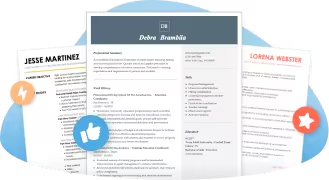Want a stronger resume? Use our extensive library of professional resume examples as practical starting guides.
Additional Library and Museum Resume Examples
Collections Specialist Resume Example (Text Version)
[Your Name]
[City, State ZIP Code]
[Email Address]
[Phone Number LinkedIn]
Resume Summary
[Insert your summary here. This should be a brief statement highlighting your core qualifications and career goals.]
Summary of Qualifications
- [Insert qualification #1]
- [Insert qualification #2]
- [Insert qualification #3]
- [Insert qualification #4]
[Type of] Skills
- [Add relevant accomplishment or responsibility related to Skill 1]
- [Add relevant accomplishment or responsibility related to Skill 1]
- [Add relevant accomplishment or responsibility related to Skill 1]
- [Add relevant accomplishment or responsibility related to Skill 1]
[Type of] Skills
- [Add relevant accomplishment or responsibility related to Skill 2]
- [Add relevant accomplishment or responsibility related to Skill 2]
- [Add relevant accomplishment or responsibility related to Skill 2]
- [Add relevant accomplishment or responsibility related to Skill 2]
Education
[Degree Earned]
[High School Name, Location]
[Graduation Date or Estimated Graduation Date]
- [OPTIONAL: Add relevant coursework or academic achievements]
- [OPTIONAL: Add any honors or awards received]
Work History
[Job Title #1 | Club or Employer Name #1]
[Location, Year]
[Job Title #2 | Club or Employer Name #2]
[Location, Year]
How to Write a Museum Collection Specialist Resume
Hiring managers rely on a chronological-based resume format, like the sample collection specialist resume below, to quickly identify your skills, experience and career development. Use this and professional resume-writing tips to write a compelling resume.
-
Professional header and contact info:
Start your document with your name, phone number and professional email address.
-
Compelling summary statement:
Use a resume summary or objective to highlight your curation specialty or skills like painting restoration, document preservation or historic research.
-
Highlight your skills:
Create a dedicated section to showcase hard and soft skills specific to museum curation and collection, such as item management, collaboration or environment maintenance.
-
Emphasize your work history:
List your work experience in reverse-chronological order. Add job titles, company names, dates of employment, and key responsibilities and achievements for each role in a bullet list.
-
Supporting education section:
Detail your educational background, mentioning any relevant degrees, diplomas or certifications obtained.
-
Additional sections:
You can add resume sections for licenses, certifications, industry memberships or unions, awards, volunteer experience or spoken languages.
- 1
- 2
- 3
- 4
- 5
- 6
1
How to Write a Museum Collection Specialist Resume Summary
Your resume summary is the first opportunity hiring managers have to learn your qualifications. Make the most of this two- to three-sentence introduction by focusing on relevant collection-handling experience in preserving, cataloging and managing museum collections.
Add key details:
To highlight your advanced training, use quantifiable data or list your knowledge of specific museum databases, cataloging systems and conservation techniques.
Tailor to the job:
Carefully scan the job description and identify similar or related experience. Prioritize these examples under your resume summary.
Be brief:
Limit yourself to no more than three detailed sentences. You’ll have plenty of space to elaborate on your work experience throughout your resume and cover letter.
Strong and weak Collections Specialist summary
Detail-oriented collection specialist with over seven years of experience managing artifact documentation, cataloging and preservation in top-tier institutions. Skilled in using Oracle’s transportation management system (TMS) and Axiell’s EMu system to catalog over 10,000 natural history objects. Adept in conservation techniques, cataloging and exhibition preparation.
Why this resume example works:
This job seeker uses specific examples of collection management, such as their knowledge of cataloging and shipping systems, along with an estimate of the collection size they can maintain and organize. This information helps hiring managers gauge how much training and work they can adopt upon starting.
Experienced museum professional seeking a collections specialist position. Skilled in various areas of museum work and familiar with cataloging and preservation. Looking to contribute to a museum team.
How this resume example fails:
Although this job seeker refers to relevant experience like cataloging and preservation, they must add specific examples to help hiring programs and managers find matching expertise. For example, a vellum expert may know how to handle and preserve centuries-old codexes but wouldn’t know how to preserve and restore historic gowns.
You can improve examples like this resume summary by adding information like your specialty or notable exhibits you designed, curated and opened.
Pro tip: If you’re a recent graduate or changing careers, use a resume objective to highlight transferable museum skills related to handling and cataloging museum collections.
2
How to Add Your Museum Collection Specialist Work History
Unless you use a skills-based resume like the functional format, your work history is the longest and most detailed section of your collection specialist resume. Create a chronological timeline of your previous jobs, backed with notable responsibilities or projects, so hiring managers can trace your career development.
Be specific:
Highlight work directly related to the Museum Collections Specialist role. Focus on your experience with museum collections, including cataloging, preservation, artifact handling, database management and conservation projects.
Use action verbs:
To infuse your resume with action-oriented language, start each bullet point with an active verb to describe your tasks, like “cataloged,” “managed,” or “preserved.”
Use numbers:
Use numbers to highlight your impact. Information like “cataloged 5,000 artifacts” helps hiring managers calculate your ability to tackle their hiring needs.
Strong and weak Collections Specialist work history
Museum Collections Specialist | The Bronx Museum of the Arts
Bronx, NY | May 2018 – November 2020
- Cataloged and maintained records for a collection of over 15,000 artifacts, including paintings, sculptures and historical documents, using TMS and EMu database systems.
- Developed and implemented artifact conservation strategies that improved preservation rates by 20%.
- Collaborated with curatorial staff to prepare exhibition objects, ensuring all items met strict conservation guidelines.
- Led a team in digitizing 3,000 artifacts during a long-term museum closure, creating high-resolution scans and accurate descriptions for a digital museum experience.
Why this resume example works:
This job seeker uses numbers to reassure museum directors and department heads of their qualifications. Sharing caretaking skills like improving specimen preservation by 20% and carefully handling items during digital preservation can soothe employer concerns about their valuable collections.
Museum Collections Specialist | The Bronx Museum of the Arts
Bronx, NY | May 2018 – November 2020
- Worked on preserving artifacts and prepared items for display.
- Assisted in cataloging some objects and maintaining records.
- Helped the team with different collections projects when required.
How this resume example fails:
The responsibilities are vague, such as “handled various tasks,” “worked on preserving artifacts,” and “helped the team.” This job seeker fails to mention their knowledge of common tools or museum-relevant computer software, making it difficult for hiring managers to estimate their training or onboarding needs.
3
How to Write a Museum Collection Specialist Education Section
The education section should clearly state your degree, the institution from which you earned it, and your graduation date. Museum collections specialists typically hold degrees in fields related to history, museum studies, art conservation, archaeology or anthropology. However, you can back your education with additional training and certifications.
1Prioritize your degrees:
Starting with your highest degree, add your degree name, university, school location and graduation date.
2Highlight certifications:
Add professional certifications in artifact preservation, collection management systems or conservation techniques. Prioritize certificates related to the advertised needs of the position.
3Share classes or fellowships:
If you’re a recent graduate with less than three years of formal museum collection, conservation or management experience, list classes that covered relevant skills and topics.
Example of an Education Section:
Degrees:
Master of Arts — Museums Studies
Harvard Extension School, Cambridge, IL
Graduation: 2017
Bachelor of Arts — History
University of Pittsburgh Greensburg, Greensburg, PA
Graduation: 2015
Relevant Coursework:
Smithsonian Fellowship in Museum Practice
Cooper Hewitt, New York, NY
January 2018 – May 2018
Certifications:
Diversity, Equity, Accessibility, and Inclusion, American Alliance of Museums, 2020
Collections Stewardship, American Alliance of Museums, 2019
4
15 Skills for Your Museum Collection Specialist Resume
Share a dedicated list of up to eight resume skills demonstrating your expertise in managing museum collections, preserving artifacts and collaborating with museum staff.
5
20 Museum Collection Specialist Action Verbs
Choose confident power words to help your previous job descriptions stand out from those against other job seekers. The following is a suggested list of persuasive action verbs related to common museum collection specialist responsibilities.
- Analyze
- Archive
- Assess
- Catalog
- Collaborate
- Conserve
- Curate
- Digitize
- Document
- Evaluate
- Inspect
- Manage
- Organize
- Preserve
- Record
- Research
- Restore
- Secure
- Track
- Update
6
Additional Resume Sections
Consider adding the following sections to your museum collection specialist resume based on your specific circumstances and to enhance your qualifications:
Use a Cover Letter to Express Yourself
A resume is a concise overview of your skills and experience — a curator cover letter expands on this foundation. Add a cover letter to share one or two examples of how you excelled in similar roles or how your skills match a company’s needs. Use this sample as a guide or visit our helpful resources to boost your application.
Museum Collection Specialist Resume FAQ
How do you tailor your museum collection specialist resume for tools like applicant tracking systems (ATS)?
Use relevant keywords from the job description, such as repeated, highlighted or labeled job descriptions. Common key phrases can relate to exhibit descriptions, audience education, artifact preservation or cataloging.
Use an ATS-friendly resume that doesn’t use images or complex formatting so these digital tools can accurately scan your resume sections. Use a popular download format, like Word or PDF.
How much do collection specialists make in a museum setting?
Salaries will always vary depending on your education and experience, place of employment and local wage laws. The Bureau of Labor Statistics notes that your annual salary can range from $48,670 to $61,750.
Should your collection specialist resume share references?
No, your resume should only focus on your work history, skills and education. You should create a separate reference page since hiring managers request this information once they’ve selected their final two or three candidates.







